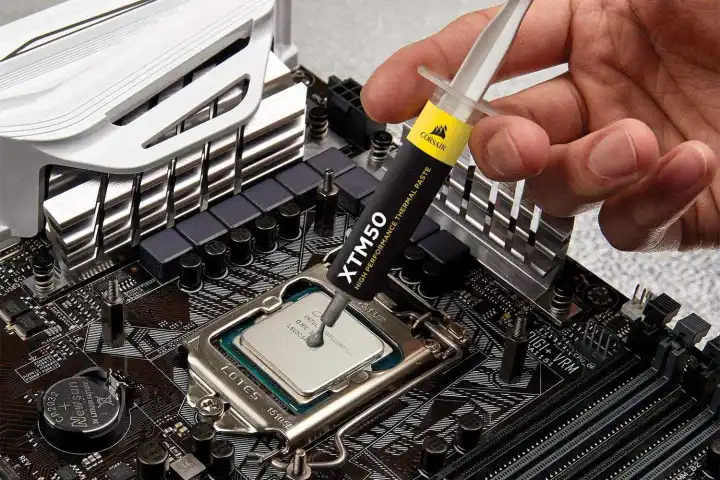Thermal paste, often referred to as thermal compound or thermal grease, is a crucial element in keeping your CPU cool and running efficiently. Proper application of thermal paste can significantly improve heat transfer between the CPU and the heatsink, leading to better thermal performance. In this article, we’ll explore eight helpful tips to ensure you get the most out of your thermal paste and maintain your processor’s temperature at optimal levels.
Choose the Right Thermal Paste:
Not all thermal pastes are created equal. There are various types available, including silicone-based, metal-based, and ceramic-based pastes. Different CPUs and coolers may perform better with specific thermal pastes. Research and select a high-quality thermal paste that suits your CPU and heatsink, keeping in mind factors like thermal conductivity and longevity.
Clean the CPU and Heatsink:
Before applying new thermal paste, it’s essential to clean the surfaces of both the CPU and heatsink thoroughly. Residual old thermal paste or dirt can hinder the new paste’s performance. Use isopropyl alcohol and a lint-free cloth or cotton swab to clean the surfaces carefully.
Apply the Right Amount:
The saying “less is more” applies when it comes to thermal paste application. A pea-sized or rice-sized amount of paste is typically enough for most CPUs. Applying too much paste can lead to excess seepage and reduced efficiency. The goal is to create a thin and even layer to facilitate maximum heat transfer.
Use the Spread or Dot Method:
There are two primary techniques for applying thermal paste: the spread method and the dot method. The spread method involves spreading a thin layer of paste across the CPU using a card or spatula. The dot method, on the other hand, involves placing a small dot of paste in the center of the CPU and letting the heatsink spread it when mounted. Both methods can be effective, but the dot method is generally preferred for its simplicity and consistent results.
Mind the CPU IHS:
Modern CPUs come with an Integrated Heat Spreader (IHS) that covers the actual processing die. When applying thermal paste, it’s essential to cover the entire IHS surface evenly. The IHS helps distribute pressure evenly when mounting the heatsink, ensuring optimal heat transfer.
Avoid Air Bubbles:
Air bubbles trapped between the CPU and heatsink can hinder heat transfer. To minimize the chances of air bubbles, apply a thin and even layer of thermal paste, and securely mount the heatsink. Avoid reseating the cooler repeatedly, as it may introduce more air into the interface.
Periodic Reapplication:
Over time, thermal paste may degrade, dry out, or become less effective due to high temperatures and continuous usage. Consider reapplying thermal paste every 1 to 2 years to maintain peak performance. However, be cautious not to remove the CPU from its socket too frequently, as this can cause damage.
Monitor Temperature and Performance:
After applying thermal paste, monitor your CPU’s temperature and performance regularly. Use software utilities or BIOS settings to check temperature readings and ensure they are within acceptable ranges. Monitoring will help you detect any potential issues early on and allow for timely adjustments if needed.
Conclusion:
Properly applying thermal paste is a small but vital aspect of CPU cooling that can significantly impact the overall performance and longevity of your processor. By following these eight helpful tips, you’ll be well on your way to achieving optimal heat transfer and maintaining your CPU at a stable temperature, even under heavy loads. Remember to choose the right thermal paste, apply it correctly, and periodically monitor your CPU’s temperature for the best results.
